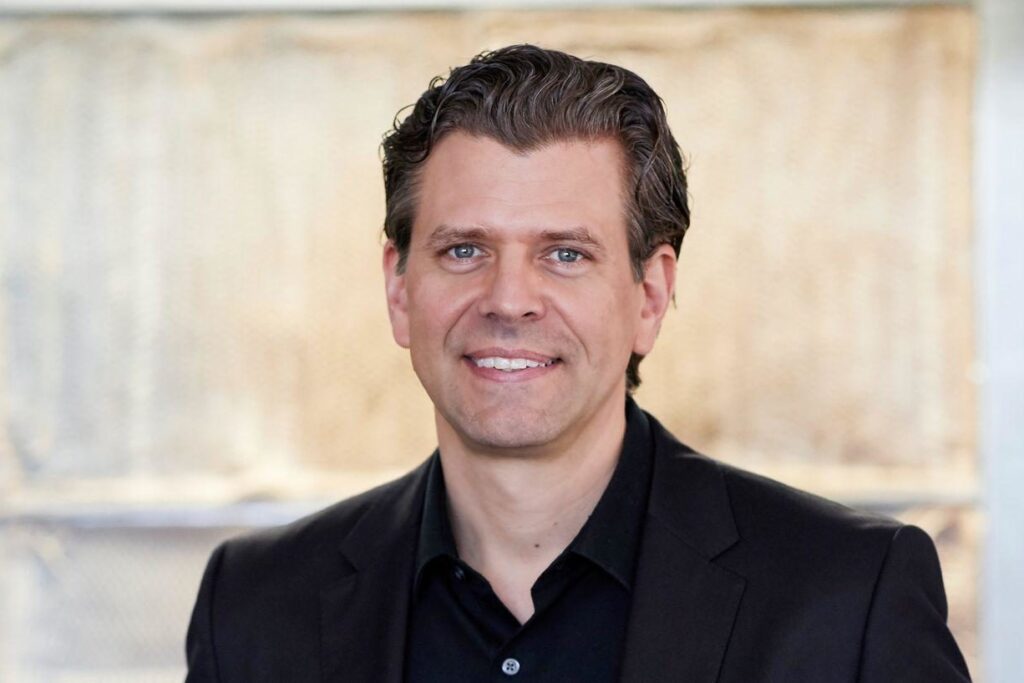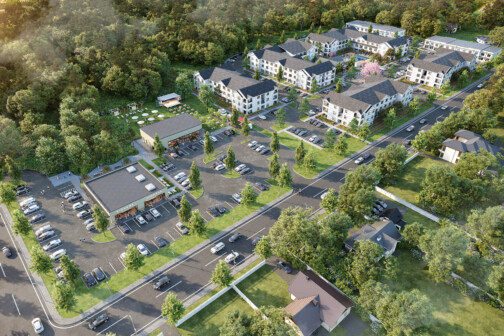Dallas’ efforts to develop a vibrant Downtown face serious design obstacles. But for Ron Stelmarski, design director at Perkins&Will’s Dallas office, these challenges also create an opportunity for the future of Dallas. Creative solutions will be needed for the city to grow, but, unlike other urban centers, he says, Dallas has the “elbow room” to shape new connections.
Read on as Stelmarski discusses what it means to design projects based on his firm’s “living design” philosophy, why green space is vital in urban design, and even get some book recommendations if you’re interested in urban design and planning.
D CEO: I’m fascinated by the term “elastic city.” Can you explain what that means? Why do you consider Dallas an elastic city?
Stelmarski: “Having moved here from Chicago about 10 years ago, I have an appreciation for projects both big and small. With each new project comes a real chance to reorder the city in a pretty fundamental way. And so, when you add something new, it creates a new set of relationships with other parts of the city. Whereas I think of New York City or Chicago being relatively developed, you know, there’s not a lot of elbow room to grow. The city grids are pretty fixed, and it all plugs into a grid. Here, we don’t have those same limitations.
“I also see elasticity as being environmental. When we get rain here, it comes down in buckets. As we know, we get as much rain annually as Seattle, Washington, but because of the way we get it, we’re in flood conditions. After a big thunderstorm, we’re in drought mode a few weeks later. And so things shift and change our relationship to the built environment pretty dramatically. That’s what I consider to be elastic, too.”
D CEO: You mention Downtown Dallas, specifically, as an area with a lot of upsides—with its underground tunnels and large impersonal buildings that were designed in the 1970s and 80s. How are these design challenges opportunities to shape the city’s future?
Stelmarski: “Well, I think there’s just a lot of loose pieces that aren’t very connected. It’s always about this connective tissue. We have a latent infrastructure. There’s no reason to use any one of the pieces of infrastructure in any real, dramatic way. So, the train doesn’t get you everywhere you want to go; the new bus path might start helping with connectivity. But it just seems that we’ve got a lot of good models of things that work and don’t work.
“The fact that we have vacant buildings within the Downtown sector and can be repositioned, I think is fantastic. And we see that all over the country. It’s so great being able to breathe life into these buildings. One of our recent projects is an excellent example of this: The old Dallas High School on Bryan Street. So, we have a community asset structure that was about teaching and learning. And we’ve transformed it into a place to work but what’s also really cool is that the auditorium is now sort of a civic living room. It’s a great example of understanding the value of building on what’s already there.
“And that’s the future of our city: thinking through some of these more historic and unloved parts. Every corner you turn has a different identity, but focusing on how we can start to tie these places together and enliven, there’s something compelling about the possibilities.”
D CEO: Can you explain your firm’s “living design” philosophy? What are some recent local projects that exhibit “living design”?
Stelmarski: “I consider that living design as seeing a building as an organism. It’s living, it’s breathing, and it’s part of the ecosystem of its environment. But the way we talk about it as a sort of a simple litmus test: does the design positively impact the people in the environment.
“It came about in the latter part of the 20th century when a lot of architects and urban planners started looking at building green, the green movement, and sustainability. Of course, it started by preserving natural resources. But in our work as architects, we’re centered around the people who use the spaces we design. And we didn’t think that the Green Movement was explicitly talking enough about the people. And so we started to think about health and human welfare.
“And it has to do with the built environment, you know, proximity to food sources, how much are you walking, do you have access to other train lines, a sense of community, all of these things. So for us living design, it’s a catch-all phrase to ensure that our projects live up to this sort of promise that we talked about. And so again, it goes back to us trying to take the best of all these different scoring charts and then focusing on the beauty and delight that can come through with people.
“One of the projects that I think of is a good example of this here in Dallas, and another new one is in Houston, is the American Cancer Society’s Hope Lodge. They’re the hotel for patients’ families for those outside of the 50-mile radius, and they’re designed to take a burden away from them. The families are dealing with so much with their family member who’s going through treatment, so we try to build a sense of community. So you get all the best things of community, tied together with healthy materials and responsible design. Win-win.”
D CEO: Finally, D Magazine’s founder, Wick Allison makes Jane Jacob’s The Death and Life of Great American Cities required reading for anyone writing about urbanism. If someone is interested in urban design and the future of cities, what books can you recommend as required reading?
Stelmarski: “That’s a fantastic one. Of course, if you’re in Dallas, you have to read The Open-Ended City. I think it talks a lot about the evolution and growth of Texas and gives a lot of explanation of some of the design and systemic challenges we face. So it’s not just about city building. Some other companions to The Death and Life of Great American Cities include The Image of the City by Kevin Lynch. He talks about nodes, axis, and all of the things that are still at play. Something maybe a little less mainstream is Thom Mayne’s Morphosis.”
Get the D CEO Real Estate Newsletter
Author






